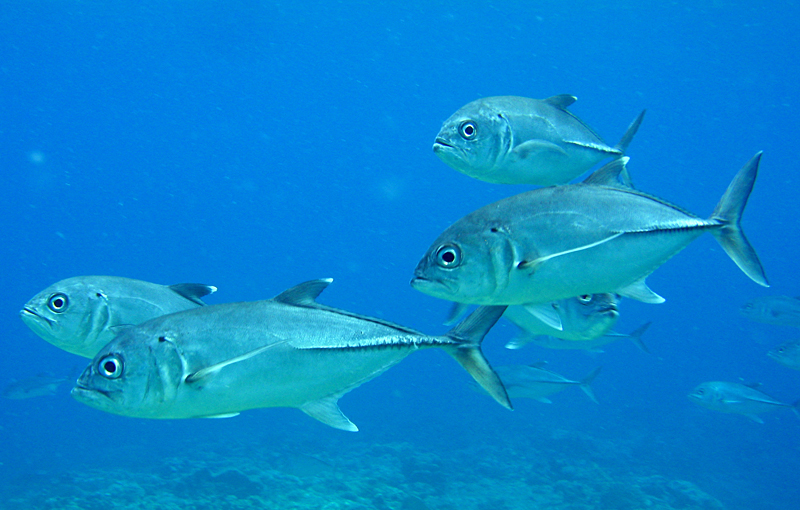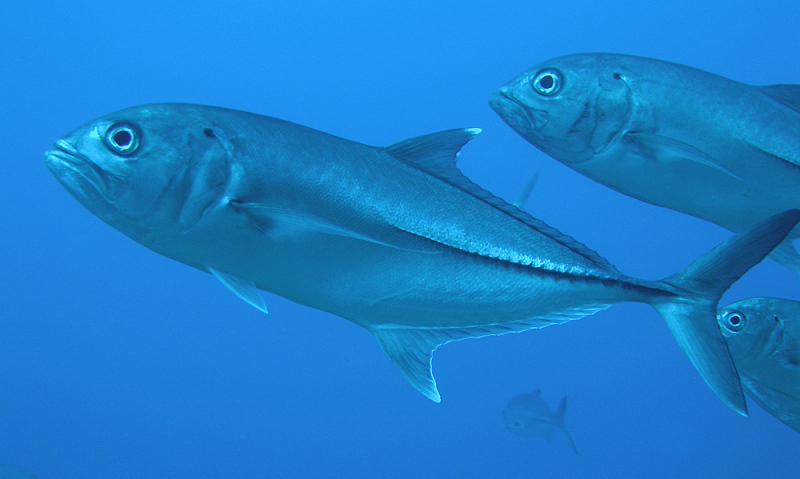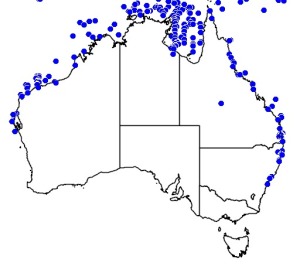Colours
Distinguishing features
A silver trevally, usually seen in schools, with relatively large eyes. A series of strong, dark scutes (enlarged scales) lines the straight part of the lateral line towards the tail. Dorsal and anal fins have white tips. Adults have a small dark spot at the top of the opercle (gill cover).
Size
- Up to 120 cm (Length of specimen)
Weight
- Up to 18 kg
Depth range
- Up to 100 m
Synonyms
Distribution
Distribution and habitat preferences
It can be found in marine environments. It can be found in brackish environments. It can be found in freshwater environments.Behaviour
Nocturnal (Randall et al, 1990).
Diet
It is a fast-swimming predatory species that has had several studies determine its diet in various places throughout its distribution. As mentioned above, the species is mostly inactive during the day, and feeds at dusk and through the night.
The large stationary aggregations break off as the fish move off to hunt in small groups or individually.
The species predominantly takes small fish as prey, however it supplements its diet with a varied array of invertebrates. These include crustaceans such as shrimps, decapods, copepods and stomatopods, cephalopods, gastropods, jellyfish, sponges and even species of open ocean sea-skater insects. (Wikipedia)
Web resources
References
- Bray, R.A. and T.H. Cribb (2008). Stephanostomum sp(p). (Digenea: Acanthocolpidae) from scombrids and carangids (Perciformes) from the Great Barrier Reef, with the description of two new species, Revisita Mexicana de Bidiversidad, 79: 49S-68S. LIRS catalog number 1151.
- Burger, M.A.A. and R.D. Adlard (2010). Four new species of Kudoa Meglitsch, 1947 (Myxosporea: Multivalvulida) from Australia with recommendations for species descriptions in the Kudoidae, Parasitology, 137: 793-814. LIRS catalog number 1318.
- Randall, J.E., G.R. Allen and R.C. Steene (1990). Fishes of the Great Barrier Reef and Coral Sea University of Hawaii Press, Honolulu, Hawaii.




